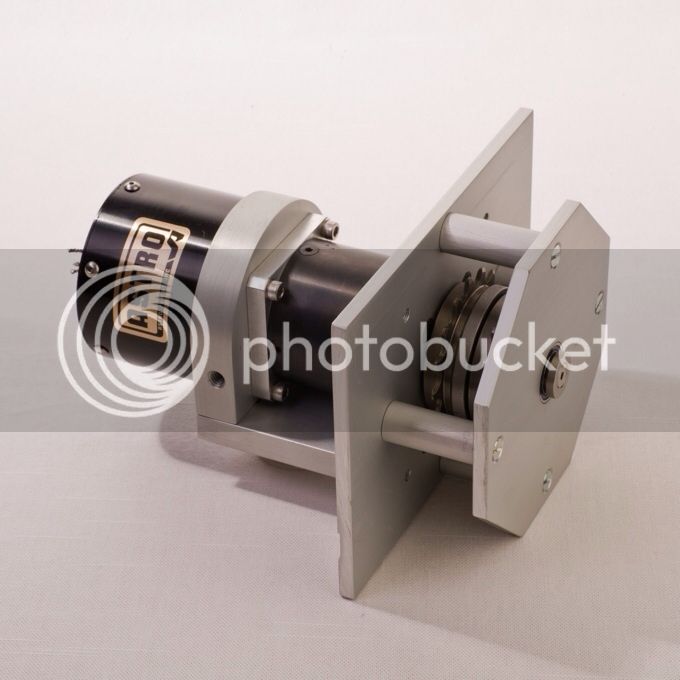The very first system I designed, was a 1000 watt mid drive. It had one belt stage, and one planetary gearbox stage. I gave up on it, because was kludgy, and it ate roller clutch double freewheels for lunch (the roller clutch was overloaded in the engaged direction). Also because the two sprockets on the roller clutch double freewheel were so close, if you jumped a chain, the chains jammed together and locked up. There where no available options.
Now, I am further down the drive development road (4 years), and I finally have solved the double freewheel problem. The result is shown in the following pictures.
The motor is an Astro Flight 3210 6 turn Kv 250 rpm/volt, Rm 0.045 ohm, Io 1.00 Amp. The gearbox is a Neugart PLE 60, 20-1, precision 2 stage planetary. On the gearbox output shaft is a true double freewheel. Astro 3210 motors come in different winds for different voltages. The gearbox ratios can be selected for top speed.
The two freewheels are mounted back to back, they engage in opposite directions. The inner freewheel, closest to the gearbox, drives the rear wheel. It is engaged when the motor is turning, and providing power. The outer freewheel is driven by the crankset. It freely rotates on the motor shaft, isolated by a roller bearing. When the rider provides power, the outer freewheel is engaged and drives the inner freewheel sprocket (only). The inner freewheel is isolated from the motor shaft, when driven this way, by its freewheel function. If you jump a chain, there is enough room between the sprockets, so the chains do not jam, but rotate freely on the shoulders of the freewheel. Josh Kerson has tested this double freewheel system extensively, on his Rans Stratus, with my original Astro 3210 drive system. He loves it, smooth operation, and no problems.
The front mounting plate is 5x7 inches. There are no mounting holes in the plate, as each application will be different. Tapped holes, in the mounting plate for the outer bearing support are every 45 degrees, so the four mounting spacers can be put in different positions to avoid chain interference.
This drive will mount up an Astro 3215, 3220, with very minor modifications. Any one wishing to test the power handling capability of a normal bicycle drive train, this is the system for you.
I am looking for testers, with a recumbent, who will mount, test, and publish results.


